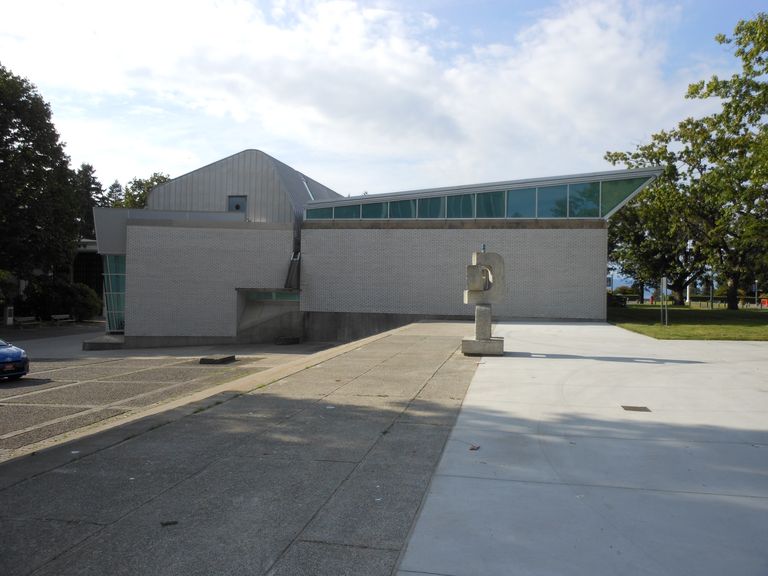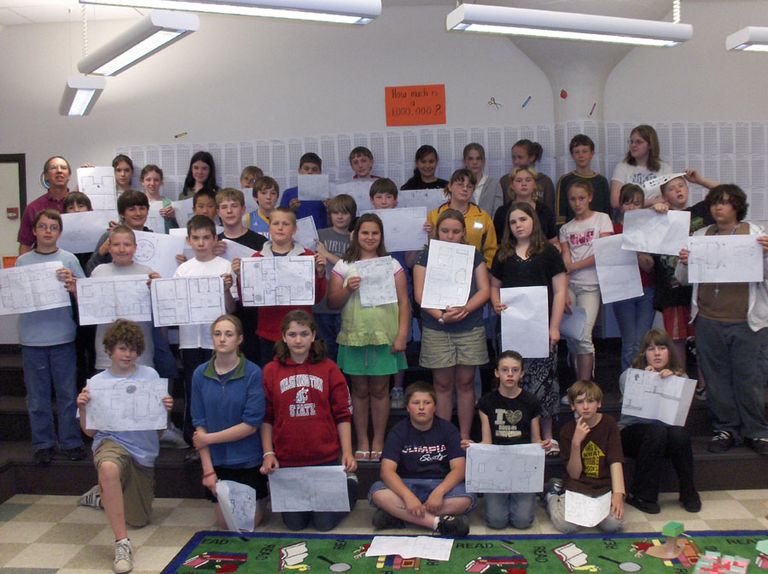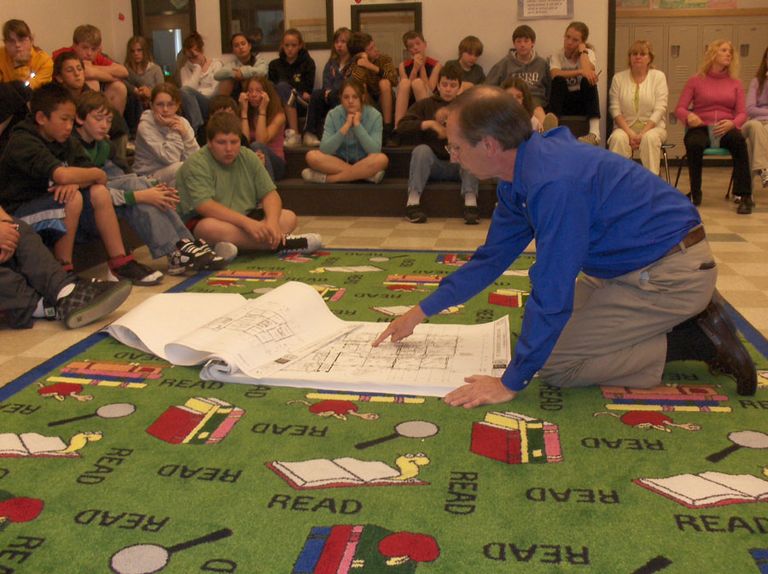9.12 AIAVT News

from the PRESIDENT
Summer’s end regarding AIAVT business has been active and tremendous. Personally, I’ve been spearheading the effort to organize the 2012 AIA New England (AIANE) Awards jury in Vancouver, More...
Understanding Vermont’s Labor Regulations: What Do They Mean for Architects?
Many architectural and engineering firms in Vermont hire consultants to complete special services that these firms do not provide internally, but are, however, part of their overall contract with the owner. Recent developments in Vermont’s Workers’ Compensation (WC) and Unemployment Insurance (UI) regulations present some challenges to these traditional hiring practices. More...

Final Farewell to Guy Teschmacher
from the PRESIDENT
Summer’s end regarding AIAVT business has been active and tremendous. Personally, I’ve been spearheading the effort to organize the 2012 AIA New England (AIANE) Awards jury in Vancouver, British Columbia. The Northwest is my old stomping ground, having lived and worked in the region for over ten years. Since moving away in 2005, my husband and I have made a point of spending our vacations back in that area, visiting friends and hiking and climbing in the mountains. This last vacation back to the Northwest was preceded by a trip to Vancouver to meet with the jury.
The Northwest region and its climate share similarities to those of the Northeast; similar latitudes give both distinct seasonal changes. The Northwest is mountainous, with lush forests and proximity to the ocean. Architects there deal with factors similar to those we face here: large snow loads; wind loads; a building envelope that responds to both extreme cold in the winter and warmth in the summer; moisture issues; and solar strategies. There are a number of superb architects in the Northwest, doing cutting edge work and leading the country—as are some of our Vermont members—in environmental standards. AIAVT was very fortunate to have four of these architects serve on the AIANE awards jury this year. I’m most grateful to them for considering each and every submission over a very long but rewarding day. I encourage you to find out more about them and their excellent work:
- Patricia Patkau. Principal, Patkau Architects; Professor, University of British Columbia, www.patkau.ca
- Peter Cardew. Principal, Cardew Architects; guest critic, University of British Columbia, www.cardew.ca
- Matthew Soules. Architect; Director, Matthew Soules Architecture; Professor, University of British Columbia, www.msaprojects.com
- Jessyca Poole. Architect, Deforest Architects, www.deforestarchitects.com
I convened with the jury on August 20 at the University of British Columbia (UBC) in Vancouver. If you haven’t been to Vancouver, you should consider a visit not only to the thriving downtown area, but out to the UBC campus. Works by several of our jurors—Peter Cardew and Patkau Architects—are featured there. Arthur Erikson, one of the great modernists also has work on the campus, including the Museum of Anthropology. While there, I was extremely fortunate to have had Patricia take me on a tour of her firm’s recently completed Beaty Biodiversity Center and Peter Cardew’s Belkin Art Gallery. I also walked through construction of the UBC’s new master plan.
Watching the jury at work was a real treat for me. The day began in a large conference room in the Architectural Building, where I led introductions and explained the AIANE portfolio requirements. With all of the nearly 250 portfolios laid out across four “stations,” the jurors then began individually reviewing the entries, assigning a rating to each. The morning was quiet, and only at a late lunch did everyone finally take a breath and begin dialogue about the work and today’s trends in architecture.
The second review started after lunch; all of the portfolios that were marked for further discussion were put out on the table. I felt privileged to witness the debates among the jurors as the final portfolios were vetted—with jury members giving their opinions, then listening and responding to their colleagues. In late afternoon, the selections were narrowed once again and jurors made a final round of comments to make sure no worthy project was missed.
Though I was the facilitator, it was both Patricia and Peter with their vast jury experience that guided a truly smooth award selection process. Though there were many noteworthy entries, the jury was content to choose 24 portfolios that represented design excellence. I thank everyone who submitted and hope to see AIANE members and award winners alike at the banquet in October, where Patricia will discuss the projects and bestow the awards.
In closing, I’d like to share a witty story involving Peter Eisenman that Matthew Soules told during the jurors’ lunch break. At the time Matthew had been accepted to several architecture schools and was trying to decide where to enroll, he made a trip to visit the Architectural Program at Yale. Prospective students were invited to a final architectural review that Eisenman was giving, a studio that Eisenman himself taught. The criticism students received seemed brutal to Matthew, Eisenman being one of the harshest critics. At the review’s end, Matthew (then young and still idealistic) stopped Eisenman and asked, “Mr. Eisenman, why do you think the work in your studio was as bad as you described in the review?” With red face and furrowed brow, Eisenman sneered at Matthew and stormed out. Matthew ended up going to Harvard that year.
I hope you enjoyed this anecdote. Thanks again to our jury and to the AIANE Awards Committee including Cam Featherstonhaugh, Maclay Architects; Jessica Braker and Tom Bachman, both of Gossens Bachman Architecture; Barbara Conrey, Vermont Technical College; Andrew Chardain and Josh Chafe of TruexCullins Architecture; and, of course, Carol Miklos, AIAVT for making all of the behind-the-scenes awards business happen. We could not have had such a smooth process without all of you spending both business and personal hours putting this together.
Warm Regards,

Diantha S. Korzun, President, AIA Vermont
Project Architect/Manager, TruexCullins Architecture
Understanding Vermont’s Labor Regulations: What Do They Mean for Architects?
Many architectural and engineering firms in Vermont hire consultants to complete special services that these firms do not provide internally, but are, however, part of their overall contract with the owner. Recent developments in Vermont’s Workers’ Compensation (WC) and Unemployment Insurance (UI) regulations present some challenges to these traditional hiring practices.
Last year, as part of a larger omnibus labor bill (H.762), the Vermont House Committee on Commerce and Economic Development attempted to pass a set of provisions to rectify these challenges. At the last minute, the bill was held up in the Vermont Senate due to conflicting goals of the Senate’s version of the bill, and lack of testimony taken on unrelated provisions that could have added to the cost of the workers’ compensation system.
Both the Vermont Chamber of Commerce and Vermont Businesses for Social Responsibility actively supported the proposed provision, which clarified the ability of independent contractors and sole proprietors to work outside of WC and UI requirements. The provision would have also created a voluntary certification program with the state for sole proprietors and those who define themselves as independent contractors. However, for now, architecture firms must live with the current WC and UI guidelines and would be advised to go through them in detail to understand the implications on current hiring practices.
According to Jessica Gingras, a workers’ compensation and unemployment insurance lobbyist for the Vermont Chamber of Commerce, “It is important for AIA Vermont members to use caution when utilizing temporary workers as independent contractors. It is also important to note that there have been cases in the Vermont Supreme Court that have stated clearly that even if there is a signed contract involved—intending to absolve an employer of liability—a worker can still be determined an employee. We recommend contacting the Department of Labor directly with any specific or unique cases and questions before hiring—as a cautionary measure.”
For more information about these guidelines, see the descriptions of both, as shown below, or contact Jessica Gingras at (802) 262-2130. Architects who have been affected adversely by the current programs and would like to see changes are also encouraged to contact their legislators.
VERMONT WORKERS’ COMPENSATION PROGRAM
Is an individual my employee for Workers’ Compensation purposes?
YES - if the individual has entered into the employment of, or works under contract of service or apprenticeship with you as the employer...
There are a few limited exemptions:
- Work of a casual nature AND not for the purpose of the employers trade or business
(Casual work is generally one time in nature and not similar to work done by the employer)
- Amateur Sports
- Agriculture employment if farm payroll < $10,000 per year
- Family member living in employer’s house
- Licensed real estate broker/sales
- Service in and about a private dwelling
- With approval of VDOL, up to 4 executives of a corporation or LLC
- Sole proprietor or partner owner of his/her own unincorporated business, if;
¨ Work is distinct and separate from work of the person the individual contracts with, AND
¨ Individual is in business for self, AND
¨ Individual is not treated as employee for income tax, AND
¨ There is a written contract expressly waiving coverage.
Ask the following questions:
1. Did the individual perform services? If yes,
2. Did you pay the individual wages? If yes, then “right to control” and “nature of business” tests must be applied.
The worker is only an independent contractor if the employer meets his or her burden by showing:
A. Worker is free from direction and control; AND
B. Worker is doing work outside the usual course of the business.
- If an individual is an employee under the WC tests he/she must be covered with WC insurance even if the wages earned are small or the hours worked are few.
VERMONT’S UNEMPLOYMENT INSURANCE PROGRAM
Is an individual my employee for Unemployment Insurance purposes?
§ Ask the following questions:
1. Is the person or entity you hired an “individual”? If yes,
2. Does the individual have other workers? If no,
3. Did the individual perform services? If yes,
4. Did you pay the individual wages? If yes, “ABC” test must be applied.
UI PROGRAM “ABC” TEST
§ The worker is an independent contractor only if the employer meets his or her burden by showing:
¨ Worker is free from direction and control; AND
¨ Worker is doing work outside the usual course of the business, or outside the place where the business is conducted; AND
¨ Worker is independently established in a trade, occupation, profession or business.
§ All three prongs of the test must be met to find individual is not your employee.
UI PROGRAM -“ABC” ADDITIONAL THOUGHTS
- Individual is free from direction and control; examples of this might be:
¨ Individual bids for the job and is paid by the job
¨ Individual completes job with no direction, supervision or set hours
- Individual is doing work outside the usual course of the business, or outside the place where the business is conducted; examples might be:
¨ Individual does work which none of your employees does and for which you do not advertise
¨ Individual does all work at their own facility
- Individual is independently established in a trade, occupation, profession or business; examples might be:
¨ Individual has employees of his/her own
¨ Individual has liable UI account with VDOL
¨ Individual advertises his/her business services to the general public
As you can see, if there is a connection between your business and the “individual”, in most cases the individual is your employee for both WC and UI purposes
¨ EVEN when the individual believes him or herself to be an independent contractor
Reminder…
¨ “Individual” is one who has no workers
Side note:
¨ For the past several years VDOL has attempted to get the law changed to have the same test for both programs.
STATUTORY EMPLOYEES
§ Pertains to Workers’ Compensation only, not UI.
§ If you subcontract a part of, or process in, your business to another business or company you may become the statutory employer of that company’s workers on your job.
§ If the direct employer of these employees has covered each of them with workers’ compensation, you may not have liability.
However, if the direct employer has not provided coverage, you may be liable to do so; your workers’ compensation insurance carrier may charge you for this exposure.
For “scenarios” with worker types an architect might hire, see the companion article, “Is She or Isn’t He?” in the sidebar of this issue.
Final Farewell to Guy Teschmacher
Sadly, members of the architects’ community learned late this summer that Guy Teschmacher, a former president of AIAVT, was tragically killed in a traffic accident. Despite the heartbreaking ending, Teschmacher was doing something he loved: riding his motorcycle.
Techmacher was a member of the AIAVT Board of Directors from 2002-2010. Having served on many of AIAVT’s committee’s over the years, from 2005-2008 Teschmacher had played a significant role in AIAVT’s participation in CANstruction, a design competition to benefit local food shelves. More recently, his contributions had included co-chairing Learning by Design, an outreach program in elementary schools, and co-chairing the Annual Golf Tournament to benefit the Hanne N. Williams Scholar Recognition Fund. Teschmacher, who had been employed with Black River Design of Montpelier for nearly 15 years before retiring in 2010, had continued to volunteer on golf tournament activities after his retirement.
Upon learning of Teschmacher’s death, AIAVT President Diantha Korzun said, “Guy will be missed more than I can justly express. AIAVT was extremely fortunate to have benefited from Guy’s many years of service, as well as his vast knowledge and wisdom. All of us at AIAVT extend their heartfelt condolences to Guy’s children, and his other family and many friends. Despite my sadness, I am pleased to announce that in honor of Guy, we will name our golf tournament—which benefits the Scholar Recognition Fund he was so passionate about—the AIAVT Guy Teschmacher Memorial Golf Tournament.”
In honor of Guy, his family has generously requested that memorial donations be sent to the Hanne N. Williams Scholar Recognition Fund, c/o AIA Vermont, 88 Blackbird Lane, Charlotte, VT 05445.
Have you seen the AIANE Design Awards Entries?
Nearly 90 AIANE People’s Choice Award Entries are on display in Burlington on Church Street, in the alley adjacent to City Hall Park and the BCA (formerly Firehouse) Center. The pavilion was constructed by a team of AIA members. Voting runs through Oct. 7. Winner to be announced as part of the AIANE Conference.
Calendar
9/1-30 AIAVT Design Awards Traveling Show—Hooker Dunham Gallery, Brattleboro
10/19-21 AIANE Conference & Design Awards
11/8 AIAVT People’s Choice Reception— All 2012 AIAVT Design Awards entries on display, hosted by Brownell Windows & Doors, Williston. Votes accepted through 11/28.
11/14-16 Workshop—Methods & Materials for Wooden Window Restoration course description & registration information (PDF), presented by Historic Windsor, Windsor
11/29-30 Workshop—Preservation Business & Project Management course description & registration information (PDF), presented by Historic Windsor, Windsor
12/6 AIAVT Annual Meeting & Design Awards
Is She or Isn’t He? Scenarios to Help Architects Determine Workers’ Employee Status
(This is a companion article to “Understanding Vermont’s Labor Regulations…,” also in this issue)
By Donna Leban, AIA
For architects to better understand their responsibilities regarding unemployment insurance (UI) and workers’ compensation (WC) when hiring individuals’ assistance on projects, it’s helpful to look at some typical cases in point. Let’s imagine that an architect is hired by a client to design and create drawings and specs for a building renovation project. The architect has a professional license, is a sole proprietor, has no workers’ compensation insurance, and has never had any employees. Due to the project size, scope and schedule, the architect decides to bring on the limited-term assistance of four individuals (described below), each of whose contribution is integral to the work the architect has been hired to complete.
1) Lighting Design Specialist. The designer has a professional license, is a sole proprietor, advertises her design services to the public, and has her own client base. The designer generally works alone, has no employees, no workers’ compensation policy, and is not registered as an employer with the Vermont Department of Labor (VDOL), Unemployment Insurance.
a. UI—If the scope of the architect’s contract includes providing lighting design and the architect hires the designer described above, the designer is a statutory employee for UI coverage.
b. WC—The designer is also be a statutory employee for whom the architect would be required to provide WC coverage.
c. If the lighting designer is paid directly by the owner and is not working under the direction of the architect, neither UI nor WC applies.
2) Certified Engineer. The architect seeks this individual for some of the structural aspects of the project. The engineer has a professional license, is co-owner and officer of an incorporated engineering firm, employs two apprentices and an office manager, is registered with VDOL, UI and has a workers’ compensation policy that covers everyone in the firm.
a. UI— Since the engineer’s corporation has employees and therefore a UI account, the individual would not be an employee of the architect.
b. WC—Since the engineer brings his own coverage to the relationship, liability is not likely to fall to the architect.
c. If the engineer were a sole proprietor without WC or UI, then the provisions from 1a and 1b, under “Designer,” would apply.
3) Interior Decorator. This individual is hired to plan the finishing touches of the project and is a co-owner and member of a three-person limited liability corporation (LLC). This corporation employs an office manager, is registered with UI and has a WC policy. However, the decorator has filed a Form 29 to exclude himself from coverage under his company’s WC policy.
a. UI—Since the decorator’s LLC has employees and therefore a UI account and pays UI taxes, he would not be an employee of the architect.
b. WC—The decorator is a statutory employee for whom WC coverage must be provided since he is not covered by his own policy.
c. If the decorator is paid directly by the owner and is not working under the direction of the architect, WC would not be the responsibility of the architect.
4) Part-time Administrative Assistant. The architect pays his/her spouse to perform this work and he/she is not employed elsewhere.
a. UI—The spouse of the sole proprietor architect is exempt from UI reporting as a family member.
b. WC—The spouse, though a direct employee, is exempt as a family member residing with the employer.
Note: If the architect had formed a corporation or an LLC, no family member exemptions would be permitted.
For more information about this topic and to determine what is appropriate for their firms, architects are advised to consult with an employment attorney and/or accountant or visit the VDOL website.

AFFILIATE news
NEW MEMBERS
Holly Hickey Moore Interior Design Holly Hickey Moore is a licensed interior designer offering full service project management, consulting and design services. She has been involved in a variety of projects including residential, commercial, hospitality and boutique retail stores. Contact: Holly Hickey Moore, RID, IIDA, 802-448-2998
The Sherwin-Williams Company offers consultation for project specifications requiring architectural or industrial coatings, updating of master specifications to include new S-W products or Rex Numbers, S-W Low VOC or 0 Voc systems, and MPI cross-referencing. New, AIA HSW SD technology seminars on subjects including new LEED 2009 rules for paint and coatings are also available. Contact: Mark Weiner, 617-438-1408.
United Steel Products Company is a metal fabricating manufacturer serving the residential and commercial building industries throughout the U.S. USP's product line encompasses standard construction hardware for the light construction and retail/do-it-yourselfer markets, as well as a complete line of connectors for the Engineered Lumber and Plated Truss industries. Contacts: Steven Archer, and Mark Judson.
ANNOUNCEMENTS
Engineering Ventures has added two new owners and shareholders: Paul Hobbs, PE, and Paul Boisvert, PE, LEED AP. The company operates from offices in both Burlington, Vermont and Lebanon, New Hampshire, providing a broad range of civil and structural engineering services.
Hobbs, a senior engineer who joined the firm in 2001, specializes in structural design. He has served as the project manager on many municipal and recreational projects, including municipal treatment, industrial, and manufacturing facilities.
Boisvert, also a senior engineer, joined the firm in 2007. He has a wide range of experience, including site design, project management, contract administration, and permitting. His approach to projects combines a strong interest in sustainable design with an in-depth understanding of the operational implications that follow.
Trumbull-Nelson Set to Begin Multi-Million Dollar Essex Junction Wastewater Treatment Facility Refurbishment
Trumbull-Nelson Construction of Hanover, New Hampshire and Montpelier, Vermont was recently awarded the Essex Junction Wastewater Treatment Facility Refurbishment Project contract for $11.8 million. Trumbull-Nelson will be collaborating with the project’s designer, Aldrich + Elliott, P.C., Water Resource Engineers of Essex Junction, Vermont to oversee the project’s successful completion.
Improvements to the Essex Junction Wastewater Treatment Facility will enable the plant to operate more effectively and to improve compliance with its State operating permit. Work will include the upgrade of primary and secondary clarifiers and aeration tanks, and provide new tertiary filters, sludge dewatering, chemical feed, refurbishment of the two existing digesters, and new grit collector system. Additionally, the scope includes new pumps, SCADA System work, associated mechanical and electrical requirements, and a geothermal well component.
latest ACHIEVEMENTS
Donna Leban, AIA, Light/Space/Design, South Burlington, presented a session at the BuildingsNY 2012 conference on May 3 about the rapid advances in LED lighting and how best to apply such advances in new and renovation projects.
Jonathan M. Miller, AIA, JMMa Specs, has achieved much recently. In July, he began serving his third (and last) term as Chair of CSI's Institute Certification Committee, the group that maintains the Construction Documents Technology (CDT) Certificate Program, as well as the Certified Construction Specifier (CCS), the Certified Construction Contract Administrator (CCCA), and the Certified Construction Product Representative Certification Programs. He is also a contributing author to CSI's Sustainable Design and Construction Practice Guide, due to be published in January 2013 (Wiley). He also became Vermont’s first and only Fellow in CSI and one of only 410+/- Fellows named since CSI was founded in 1948.
Ingrid Nichols, AIA, Banwell Architects, was a co-presenter at the 2012 Traditional Building Conference on July 25 held at The Exchange Conference Center in Boston. With Art Reeves of Marvin Windows and Liz Pritchett, a historical consultant, they discussed energy efficiency upgrades, including a biomass wood pellet boiler, to the Windsor Village Housing project in Windsor, Vermont.
AIAVT News is published by AIA Vermont, a Chapter of the American Institute of Architects.
Opinions are the author’s and not necessarily the views of AIAVT or any other organization.
AIAVT reserves the right to edit articles for available space and determine appropriate content prior to inclusion. Submissions must be received by the 15th of the month prior to publication.
For advertising rate and specifications, see our Media Kit.
Please send articles, notices, letters, and graphic submissions to the editor:
Carol Miklos, Executive Director, AIA Vermont
88 Blackbird Lane
Charlotte, Vermont 05445
802-425-6162










